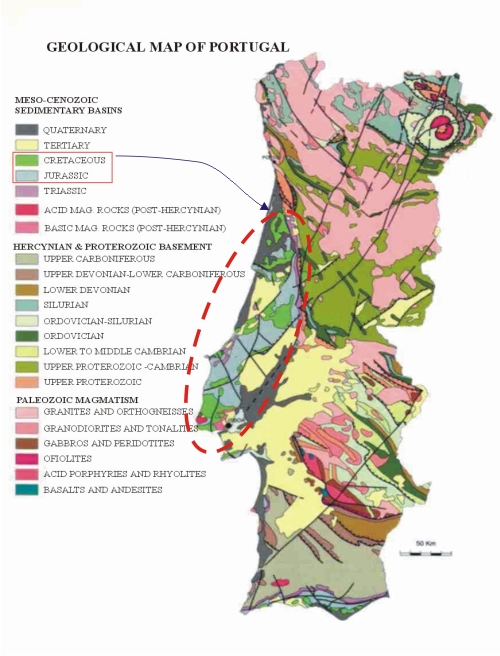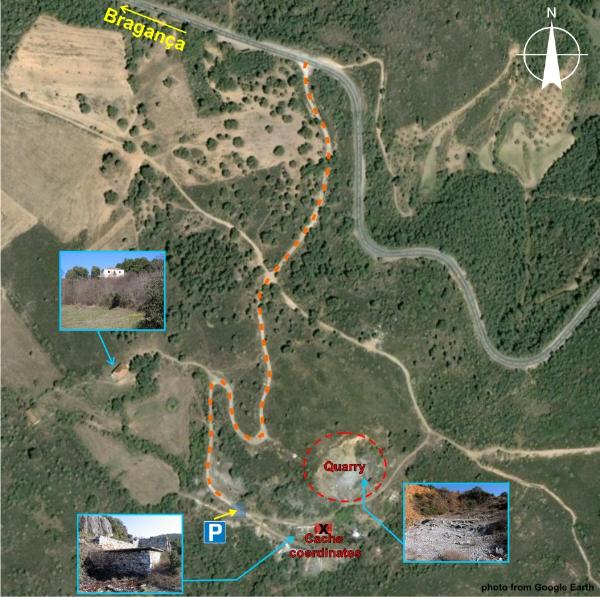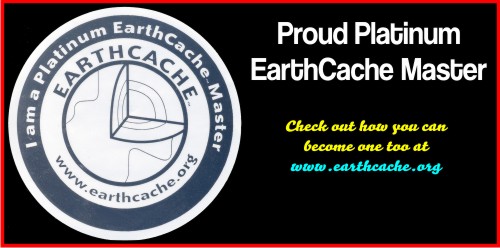From the guidelines, as from January 2013"People do not need to wait for permission to log your EarthCache. Requiring someone to wait is not supported by the EarthCache guidelines. People should send their logging task answers to you, then log your EarthCache. When you review their logging task answers, if there is a problem, you should contact them to resolve it. If there is no problem, then their log simply stands."

 What, where and how?
What, where and how?
Limestone is a very common sedimentary rock of biochemical origin that is composed mainly of the mineral calcite. Seldom are limestones pure calcite and more often than not are filled with lots of other minerals and sand such that they are called “dirty limestones”.
The calcite is derived mostly from bottom dwelling animals such as clams, brachiopods, bryozoa, crinoids and corals. When theses animals die their shells accumulate into piles of shelly debris which can form the precursors of limestone beds. Limestones form usually close to the source of shelly debris although some significant transport can occur.
Because of limestone's biogenic origins, it is often the best rock for finding fossils. The organisms themselves leave fossils in the rock and entire communities and even entire reef structures can be preserved in a limestone bed. At times a limestone is entirely composed of fossils. When this happens we term the rock coquina which is a variety of limestone and is composed entirely of fragments of sea shells.
Most limestones have a significant amount of carbonate mud. This mud matrix can even constitute 100% of the limestone rock. Origins of this mud are debated and may just be a fine grained mud left from the erosion and abrasion of calcite shells. There maybe a non-biogenic origin too.
Limestone in Portugal
In the western end of the Iberian Peninsula most limestones occur mainly from Lisbon to approximately Anadia within what is geologically known as the Lusitanian Basin (approximate outline given by dashed oval in above map). This basin occupies approximately 200 km2 and is elongated in an NNW-SSE direction for 200 km and stretches perpendicularly to that for another 100 km. 2/3 of the basin are on the continental landmass and the remainder is submersed in the Atlantic. This sedimentary basin is made up of Cretaceous but mostly Jurassic age limestones that formed during the Mesozoic associated with the opening of the Atlantic Ocean.
However, small pockets of much older limestones outcrop in the north of Portugal as is the case of the “Penacal limestones”.
The limestones at Penacal are located within undifferentiated schists belonging to the Volcano-Siliceous Complex that has a Lower Silurian age. The age of these limestones is still controversial as there are authors that defend an Upper Silurian to Lower Devonian age.
These are pure, microcrystalline, tending towards dolomitic limestones as evidenced by the 13.64% MgO content in the one sample (see table below).

These limestones were once used for the production of lime and there is a small quarry with evidence of this activity. The size of the quarry and the fractured nature of the limestones indicate an artisanal exploration of this geological resource. The quarry is now abandoned.
In order to claim your found at this EarthCache you have to be able to answer the following questions correctly:
- What colour is the limestone?
- Can you see individual calcite grains in handspecimen?
- Are there small caves associated with the limestones?
- How high do you estimate the quarry face to be?
- How many lime kilns operated in the quarry?
- Is / are the kiln/s brick covered or not?
Please send me your answers via the e-mail in my GC profile to validate the find.
References:
Manupella, G and Balacó Moreira, JC, 1990. Calcários e dolomitos de Trás-os-montes e Alto Douro. Estudos, Notas e Trabalhos, DGGM, t. 32, 3-35.
http://en.wikipedia.org/wiki/Limestone


Para contabilizar mais um found nesta EarthCache têm que responder às seguintes perguntas correctamente:
- De que cor são os calcários?
- Conseguem observar cristais individuais em amostras de mão?
- Há pequenas grutas associadas e estes calcários na zona em redor da pedreira?
- Qual será a altura da frente de desmonte da pedreira?
- Quantos fornos de cal há no local?
- O/s forno/s estão revestidos a tijolo ou não?
Enviem-me as respostas por e-mail para validarem o found. 

 The most exciting way to learn about the Earth and its processes is to get into the outdoors and experience it first-hand. Visiting an Earthcache is a great outdoor activity the whole family can enjoy. An Earthcache is a special place that people can visit to learn about a unique geoscience feature or aspect of our Earth. Earthcaches include a set of educational notes and the details about where to find the location (latitude and longitude). Visitors to Earthcaches can see how our planet has been shaped by geological processes, how we manage the resources and how scientists gather evidence to learn about the Earth. To find out more click HERE.
The most exciting way to learn about the Earth and its processes is to get into the outdoors and experience it first-hand. Visiting an Earthcache is a great outdoor activity the whole family can enjoy. An Earthcache is a special place that people can visit to learn about a unique geoscience feature or aspect of our Earth. Earthcaches include a set of educational notes and the details about where to find the location (latitude and longitude). Visitors to Earthcaches can see how our planet has been shaped by geological processes, how we manage the resources and how scientists gather evidence to learn about the Earth. To find out more click HERE.
